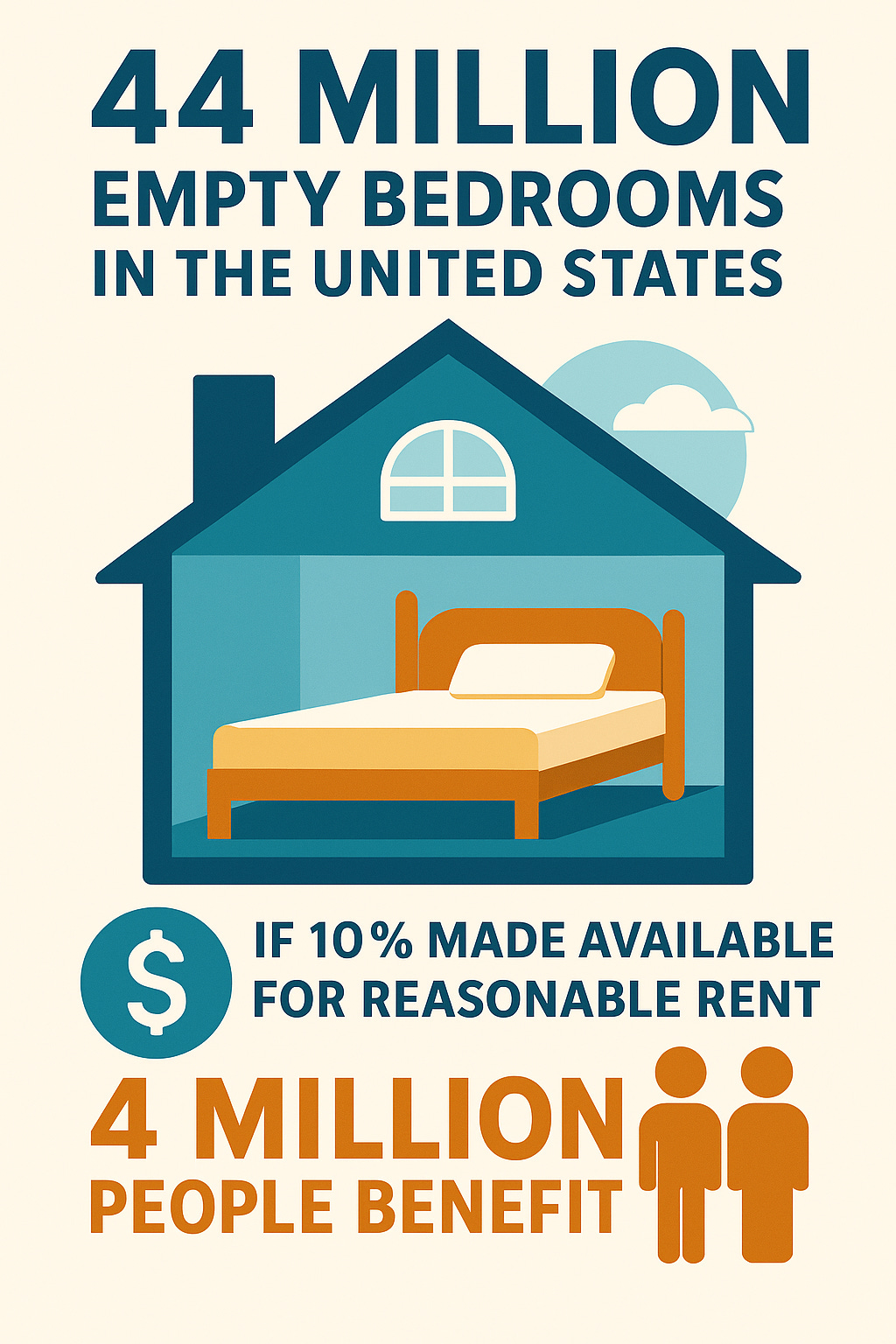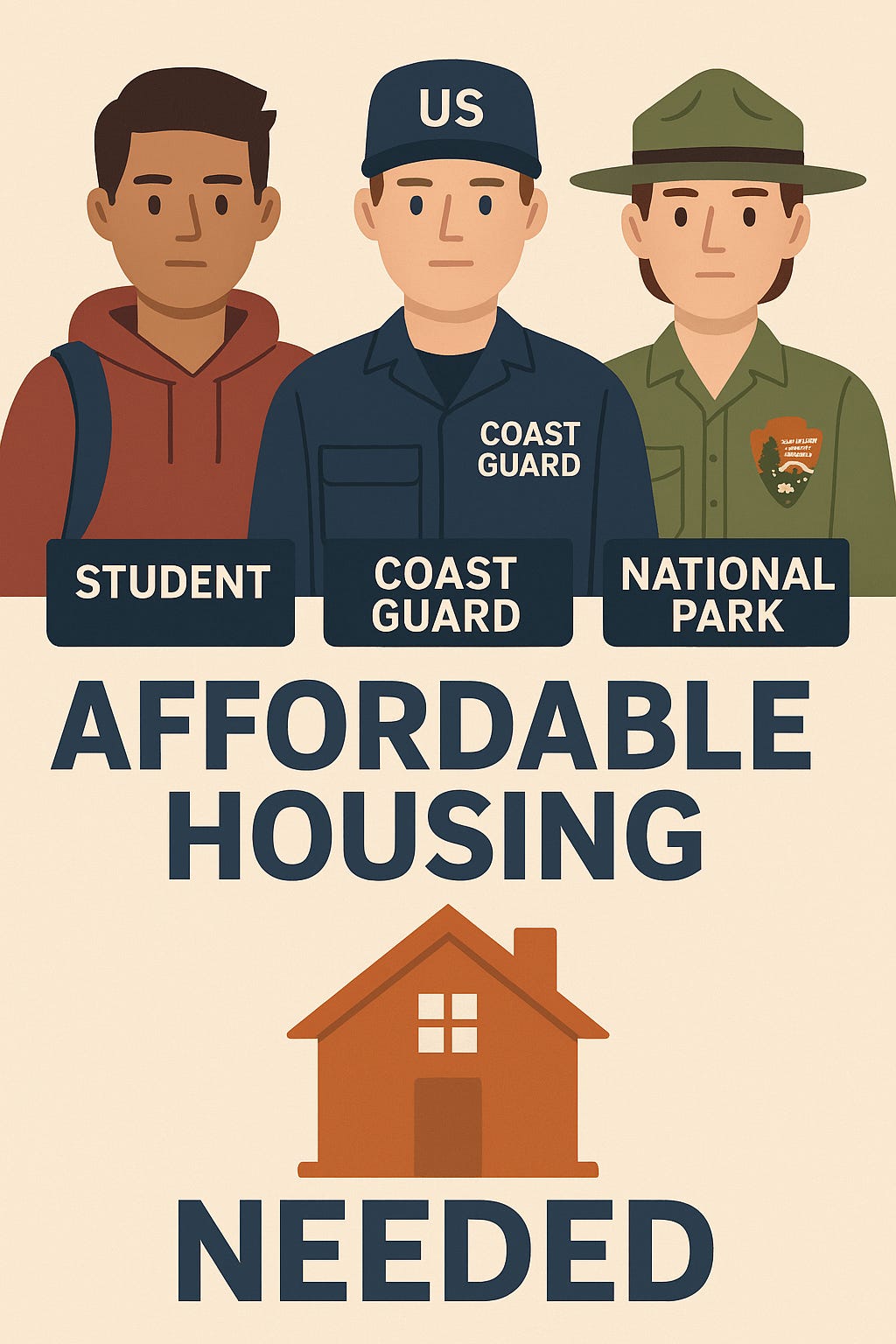Is Home Sharing the Answer to Clallam County’s Affordable Housing Crisis?
Exploring How Shared Living Spaces Can Ease Housing Costs and Build Community Connections
Today’s article comes from guest writer Nancy Stephanz, who proposes a creative approach to addressing our affordable housing crisis in Clallam County. We know that housing affordability isn't a one-size-fits-all issue; it stretches across a broad continuum—from individuals struggling with mental illness or substance abuse, to hardworking families who simply cannot keep up with escalating home costs. Effective solutions must span this entire spectrum. Nancy’s innovative perspective highlights a practical way to ease housing burdens for an important segment of our community, offering immediate relief that complements broader long-term efforts.
Is Home Sharing the Answer to Clallam County’s Affordable Housing Crisis?
by Nancy Stephanz
It will come as no surprise to the readers of this blog that the cost of rental housing has increased so much in the last few years that Clallam County has no affordable housing options for those who work for minimum wage, or for those on fixed incomes of one Social Security check a month. Most people here pay over 40% of their income for housing. This problem is not restricted to Clallam County or to the State of Washington.
But, in an article published by vox.net on Feb. 24, 2025, titled “Why Americans are moving in with strangers twice their age,” there was a stunning statistic: There are 44 million empty bedrooms in the United States. If even 10% of these bedrooms were made available, for a reasonable rent, at least 4 million people would benefit. The “reasonable rent” part is critical to allow those living on the edge of financial disaster to continue to live in dignity by sharing someone else’s home. Services such as lawn care or cooking or cleaning by the renter for the homeowner, the “host” in this scenario, can be negotiated to bring down the dollar rent cost and to make the home sharing more beneficial to both parties.
This is the idea behind home sharing. I first heard about it on the PBS Newshour during the pandemic. A clever young person was matching up graduate students who needed a cheap but safe place to live with elderly homeowners in Boston who had lots of extra room but needed company and a few extra dollars to meet their expenses, so they could continue to age in place in their own homes. This effort has led to the creation of a company called Nesterly. It is now operating in six cities and will soon be operating in Bellingham. Their website, Nesterly.com, explains their process. I think it would do well here because they offer the initial matchmaking service and provide contracts and dispute resolution services and background checks that are mandatory so both parties can feel comfortable with the idea of talking to each other before they have their first interaction. Once they facilitate a “match” they have actual human employees who call and check on all their clients monthly to be sure all is going well. No companies currently offer this kind of matchmaking and support here.
A recent article in the Seattle Times, dated Jan. 26, 2025, called “Creating small families: More women are sharing their homes as they grow older,” reported the following: “About 11 million older adult households spend at least 30% of their income on housing and utilities…The ‘significant housing shortage’ and rising cost of groceries, health care and insurance have made it harder for many older Americans to afford their monthly expenses..” Home sharing helps older adults maintain their independence.
It also gives them company so they won’t feel isolated and lonely.
Most adults who live alone in their own homes also want to continue to age in place in their own homes. Sharing it with another adult can give them practical help with pet care if they go out of town for a vacation, someone to call for help if they fall and break a hip, and just someone to notice if they develop impaired hearing or vision which they may not notice themselves. These conditions, plus loneliness itself, are risk factors for depression and dementia. And of course, there is the very strong possibility that a new friendship will be created by sharing this living space. A win-win for both parties in more than one way.
Affordable housing is needed, and currently in short supply, not just for the elderly, but by students at Peninsula College who came here from out of town. It is needed by the Coast Guard and the National Park employees all of whom have had to pass extensive background checks for their jobs. Home Sharing could help these people, too.
Then, for every apartment that this type of program frees up, more supply on the market means that rental prices for apartments will come down. This means our other workforce participants with families, our police officers, our teachers, our fire fighters, our hospitality workers, etc., will be able to find a place they can afford to rent. Home sharing agreements can help Clallam County open up that supply of apartments.
I will be speaking to various clergy and leaders of other types of social groups in the coming months to enlist their help in recruiting home sharing hosts. They can act as trusted matchmakers between hosts and prospective renters within their organizations. Once we have 50 hosts signed up, Nesterly will be interested in coming to our county. In the meantime, we will use online sites to encourage background checks, and our local dispute resolution center has told me they would be happy to help mediate any disputes that arise between home sharing individuals. I am still looking for an online site for contracts that can be used to spell out each home sharing agreement.
Home sharing can help bridge the gap in the amount of affordable housing available until we can find a creative way to get millions more homes built in this nation, and thousands more built in our state. I am convinced we will eventually do that, but it will not happen this year. Home sharing can help THIS YEAR. Please consider becoming a home host.
On a personal note, I faced some challenging financial times during the Great Recession and ended up renting out two rooms in my home. Not every renter was a perfect fit, but most were truly wonderful—and a couple have become lifelong friends. As with anything, caution and clear communication are essential, and we hope to provide more tools and resources in a future follow-up article to help others explore this option safely and confidently. That said, renting those rooms not only stabilized my finances, it gave a few good people access to safe, affordable housing. For a time, my wife and I rented a room to a Coast Guard member, and it was a mutually beneficial experience. I’ve always believed in win-win solutions, and what Nancy proposes absolutely fits that bill.
-Danny Steiger
Thanks for reading! Be sure to subscribe to be the first to get new articles discussing solutions in our community.
While you’re here, be sure to check out our previous articles:
Clallam County Solutions: Let's Build Hope Together
Modernizing the City's Permitting Process
How Can We Supercharge Clallam County's Economy
Touchstone of Change: Local Non-profit Tackles Homelessness Head-On
Engaging in Constructive Dialogue: Choosing Connection Over Contempt
A reminder Around Our Community Engagement and Comment Policy
Active dialogue and engagement with our readers is crucial. Writers on this platform are encouraged—and expected—to revisit their articles regularly, responding thoughtfully to readers’ questions and concerns.
We want conversations, not shouting matches. Therefore, comments will be reviewed regularly and are expected to adhere to these foundational guidelines:
Stay on Topic: Comments must relate directly to the article.
Respectfulness: Every comment should demonstrate respect toward authors, website management, and fellow commenters. Bullying, name-calling, or disrespectful behaviors will not be tolerated.
Constructive Dialogue: Political grandstanding is unwelcome here. While some discussions naturally involve political elements, the goal is to enhance understanding, clarify perspectives, and contribute constructively.
No Personal Attacks: As Theodore Roosevelt wisely said, it's the person who is "actually in the arena" who deserves our respect. Criticism is welcome, but personal attacks are not.
Transparency: Any new guidelines needed as this platform evolves will prioritize civility, decency, and productive dialogue.






I agree with the article’s focus on innovative housing solutions like home-sharing to address Clallam County’s housing crisis. In my twenties, I relied on roommates to afford rent, and I see similar trends emerging: multi-generational households, later-in-life roommates, dual-income households, and more single-room rentals. Port Angeles (PA) underutilizes its housing stock—think snowbirds leaving homes empty for 6-8 months, retired couples in oversized 3-4 bedroom homes, or the 200+ vacant, blighted properties noted in the latest Housing Action Plan. The lack of apartment construction for over a decade hasn’t helped.
I commend the City Council for waiving permit fees for ADUs, mobile homes, and multi-family units like duplexes and apartments. These steps encourage affordable housing. However, I’m concerned that skyrocketing fees, combined with stricter regulations and rising construction costs, have crippled the single-family housing market. Single-family building permits dropped 50% annually over the last two years, with only 12 issued in 2024. Meanwhile, Sequim and Carlsborg are adding 900 homes, highlighting PA’s lag.
Focusing heavily on ADUs and low-income (30-80% AMI) housing risks creating an imbalance. PA needs all types of housing—single-family, multi-family, and affordable options—plus better use of existing stock to ensure a vibrant future.
I've had this idea in my head, and it might not be attainable, but what if the county found a way to balance the cost of rental partially funded by an exemption of property taxes? Let's say going rate for a room of XX size is 500/mo. Homeowner is paying $500/mo in property taxes. Figure out the percentage of the monthly taxable amount is equal to the proportion of area rented, i.e. 20%. Homeowner gets to knock off $100/mo in property taxes, and the renter gets the place for $400/mo.